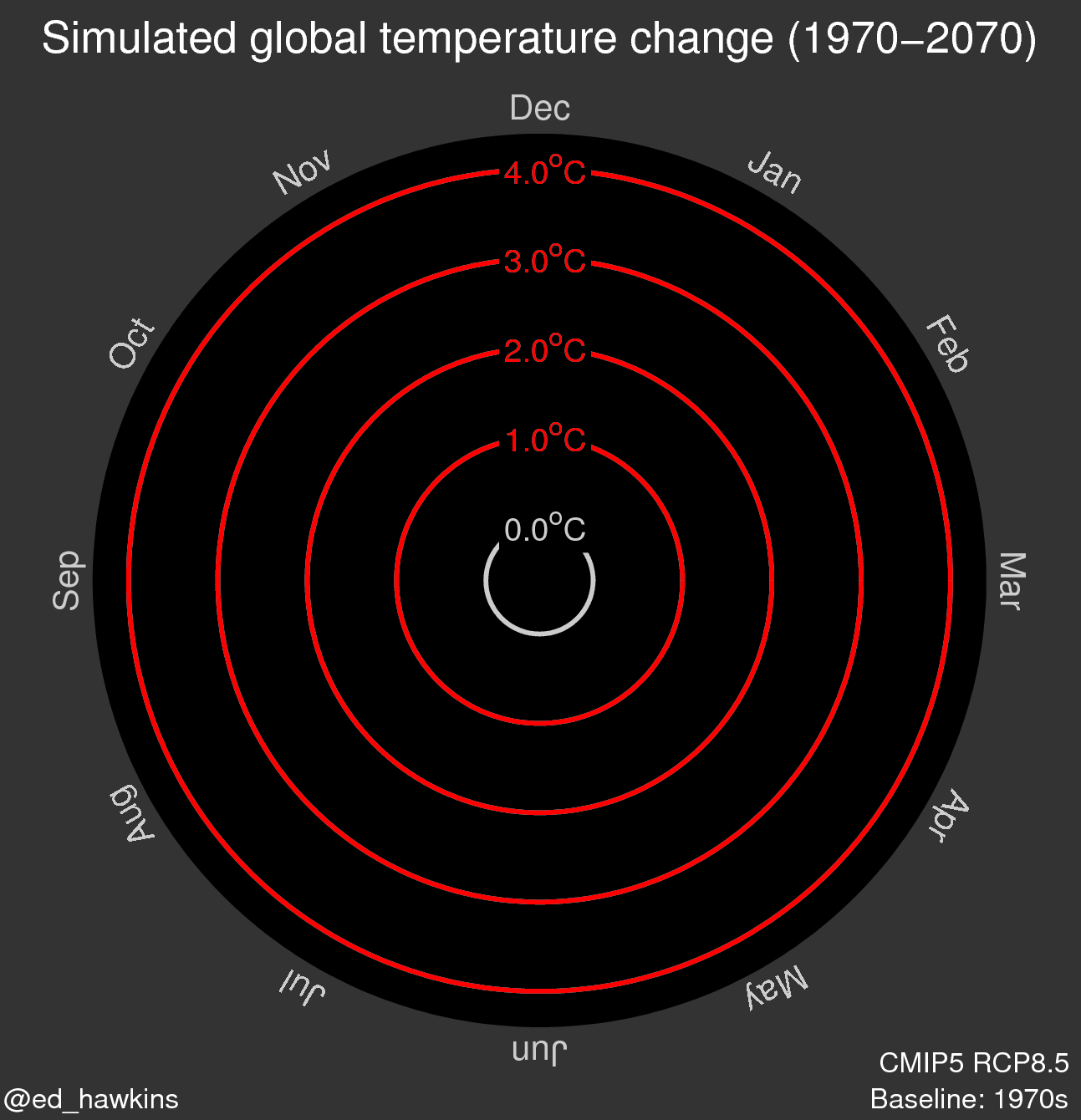Glastonbury, Britain’s largest and most famous music festival, is a great symbol of the many faces of the global climate change debate. It’s full of people enjoying life and relying on technology, easily available energy and consumer goods, yet it’s also deeply rooted in environmental and social justice concerns. And, of course, it’s also hugely exposed to extreme weather.
If the party is to keep going, can all these be reconciled? And what will it look like in the future – will it need to adapt to survive?
The climate is of course already changing. When Glastonbury’s founder Michael Eavis was born in 1935, the concentration of carbon dioxide in the atmosphere was not far above 300 parts per million (ppm). It’s now above 400ppm and rising, due to the emissions of carbon dioxide from human activities. Around the time of Eavis’s first festival in 1970, early efforts at climate modelling were predicting that the world would warm by 0.6°C by the year 2000. The actual observed warming was around 0.5°C, and again this is still rising.
The wider effects of this are beginning to emerge. Spring is occurring earlier, and there is generally more green vegetation worldwide due to rising CO₂ itself and also the warmer weather it brings. Average sea level is rising. There are more extremely hot days, fewer cold nights, more rain coming in heavy downpours, and more severe forest fires. The overall trend is clear: a changing climate, and the potential for increasing risks in future.
The forecast for Glastonbury 2070?
This year is the 47th anniversary of Glastonbury. By the time of the 100th anniversary in 2070, the high emissions scenario studied by IPCC implies a global warming of between 2.5°C and 4°C relative to pre-industrial levels, exceeding the 2°C limit that most of the world’s countries have agreed to try to stay “well below” in the Paris Agreement. Even current pledges on emissions still imply warming above 2°C.

A warmer world inevitably means further rises in sea level, due to melting land ice and the expansion of water as it warms. Global average sea level could rise by between about 30cm and 50cm, possibly more if large ice sheets collapse. In a 2.5°C-4°C warmer world, much larger rises in sea level would be locked-in for centuries to come – a cause of deep concern for small island states and low-lying coastal regions.
Exactly what this means for south-west England, and Glastonbury, is hard to pin down. Climate models tend to project milder, wetter winters, and hotter, drier summers (although some models suggest summers will be slightly wetter). But even if summers do become drier overall, when it does rain we can expect more intense downpours, as already happens in hotter climates elsewhere in the world. Therefore we can expect increased flooding risk in both winter and summer.

Glastonbury is of course famous for its mud and occasional floods. Nearby are the Somerset Levels, a coastal plain also famous for widespread flooding both from rain and, occasionally, from the sea. The plain is around six metres above sea level, so would not be permanently underwater anytime soon, but rising sea levels will leave the area more exposed to temporary coastal flooding.
Deep green or tech solutions?
The two sides of Glastonbury perfectly illustrate the challenge facing society in reducing our impact on the environment. One the one hand, the festival has strong environmental traditions – the site at Worthy Farm has a fair amount of solar panels, and sustainable transport and recycling are strongly encouraged. On the other, there is no escaping the fact that the many stages have huge power demands, many festivalgoers will be keeping a concerned eye on their smartphone battery life, and private car and air travel are still prominent. At least one company offers customers the chance to beat the traffic jams by arriving via helicopter. (I mention this not in a judgemental way – I’d love to fly in myself if I could afford it – but just to point out that this is a reality of a huge party popular with people from all walks of life.)

All this easily-available energy is part of modern life that we take for granted, but it is also influencing the environment. For decades, we’ve been burning fossil fuels to power our worldwide increase in welfare and living standards, deforesting land to make way for food production, and producing cement to build our houses and the infrastructure that supports our enjoyable way of life. These advances have had huge benefits for global society. How can we keep the benefits and share them more widely while reducing the collateral damage to the climate before it becomes too severe? Frankly, how can we keep the party going without trashing the place?
Glastonbury is a pioneer of green thinking, but is the received wisdom of relying on renewables enough? It is increasingly argued that we need to consider a full toolbox of solutions, including some options that go against Glasto’s hippy traditions.
At the other end of the Somerset Levels is Hinkley Point, site of an existing nuclear power facility with expansion in the pipeline. Can a major power-hungry festival survive and thrive in a UK energy system without the nuclear option? What risks can we accept, both from climate change itself and the potential solutions that may be required? Can we minimise these risks in clever ways?
These are the conundrums we need to debate, and the challenges we need to address, illustrated by 200,000 people enjoying themselves for a few days in Somerset.
Prof Richard Betts is discussing the science of climate change at the 2017 Glastonbury Festival, in the Green Fields Area Speaker’s Forum on Friday at 11:00 and 17:00, and on Sunday at 17:00
Find Richard on Twitter: @richardabetts

